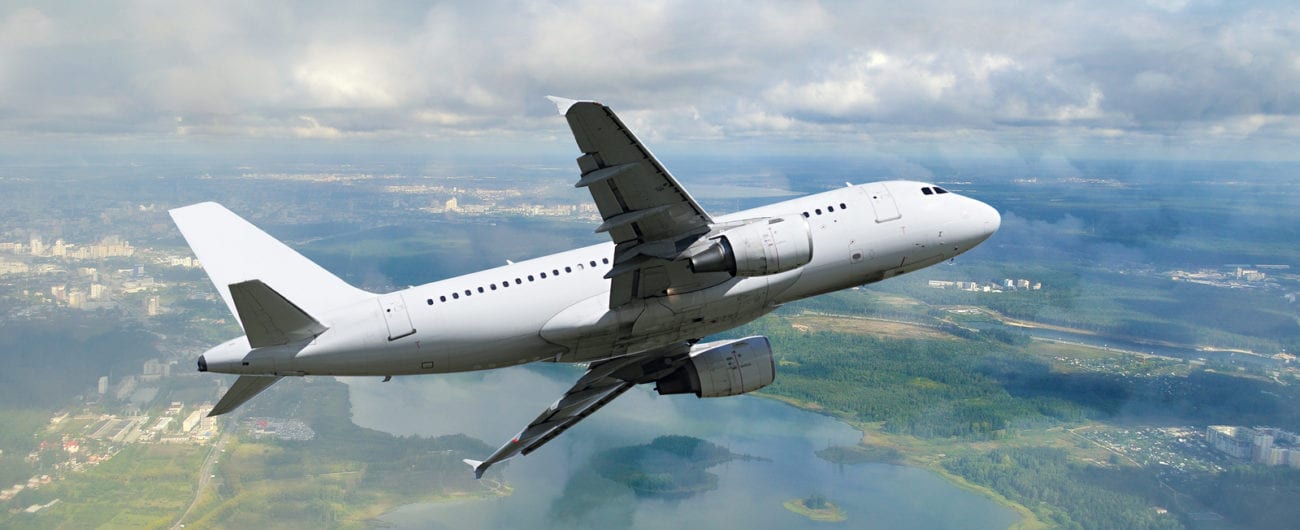In our modern world, we have become dependent on aircraft to move us swiftly from A to B. Air travel has a significant impact on global warming though. Understanding your carbon footprint and the future of travel involves taking a good long look at air travel, and considering how things might be improved.
The Impact of Air Travel on Global Warming
Aircraft engines release greenhouse gases (including CO2), particulates and water vapor into the atmosphere. These all have a warming effect and contribute to climate change.
Direct emissions from aviation account for more than 2% of global emissions. By 2020, global international aviation emissions are expected to be around 70% higher than they were in 2005, and the International Civil Aviation Organization (ICAO) forecasts that they could grow by a further 300-700% by 2050.
Unfortunately, the fact that the greenhouse gases produced by aircraft are released high up in the atmosphere means that they are even more of a problem contributing to global warming, potentially even more than emissions released at ground level.
Read: 5 Ways to Eliminate Single-Use Plastic When You Travel
However, CO2 emissions are not the only issue. The vapor trails left by planes in the sky have a more damaging effect on the climate than all of the CO2 emitted from jet engines, according to a new study. This is a hitherto unaccounted for source of global warming related to air travel but one which is set to triple by 2050.
Is Low-Carbon/ Zero Carbon Air Travel in the Cards?
There is potential, in future, for solar flight to dramatically decrease, or even eliminate, environmental pollution caused by aviation. Although there have been breakthroughs in recent years, commercial flights and complete adoption still seem to be years away.
Even with recent developments in the arena of biofuels, which could provide a partial solution to this problem, significant reductions in fuel use also seem to be years off.
The Role of Governments & Airlines
Since low-carbon or zero carbon flight is not likely to come along any time soon, the onus largely lies on governments and airlines to curb emissions and mitigate emission increases within the industry.
Since 2012, emissions from aviation within the European Union have been included in the EU Emissions trading system. All airlines operating within Europe are required to monitor, report and verify their emissions, and to surrender allowances against those emissions. Airlines receive tradable allowances that cover a certain level of emissions from their flights each year, within an emissions cap. They can also buy limited amounts of international credits from emission-saving projects around the world.
So far, this plan has reduced the carbon footprint of aviation in Europe by more than 17 million tonnes per year, and over 99.5% of airlines have been compliant with the program. However, from 2017, this plan applies only to intra-EEA flights.
The aviation industry also uses market-based and operational measures – such as improving air traffic management techniques, procedures and systems to reduce emissions.
In October 2016, the ICAO agreed on a resolution which addresses CO2 emissions from international aviation as of 2021. The Carbon Offsetting and Reduction Scheme for International Aviation (CORSIA) aims to stabilize CO2 emissions at 2020 levels by requiring airlines to offset the growth of their emissions after 2020.
However, the scheme is estimated to offset only around 80% of these emissions, since participation in the first stages will be voluntary for states, with exemption for those with low aviation activity. The scheme also fails to take into account non-CO2 related climate impacts related to aviation.
While this may well be a step in the right direction, it is clear that even such measures will struggle to curtail the damage done by transporting people (and goods) by air. Even with the cuts in emissions that have been achieved, emissions are still high. What is more, rising demand for flights globally is far outstripping any reductions that are made.
Is Carbon Offset a Solution For Air-Flight Emissions?
As mentioned above, government schemes involve airlines offsetting carbon emissions through international credits from around the world. The idea is that a certain amount of the carbon emitted by the aircraft can be neutralized through reducing carbon emissions, or sequestering carbon, elsewhere. Individual passengers can also choose to offset the carbon they emit by making an additional payment to a scheme that claims to reduce carbon emissions or invest in carbon sequestration elsewhere. Usually, such carbon offset schemes either involve planting trees to create a biological carbon sink, or making an investment in energy efficient products or renewable energy.
How to Calculate CO2 Emissions for Your Flights
A number of different calculators have been created to help passengers to work out how much CO2 they will have produced on a flight. The most basic take into account only the distance travelled. But more sophisticated ones also take into account your class of travel, the type of aircraft and its fuel efficiency, how many passengers it can carry and the occupancy rate. But even the most sophisticated calculators are hard-pressed to truly tell you how much carbon dioxide was released, as there are so many factors that can influence this – from the weather to the time of day. Such carbon offset calculators can give you at least a rough idea of your carbon footprint of your flight. But can carbon offset schemes really allow you to fly with impunity? The fact of the matter is that no matter how zealous you are in applying these schemes, flying will always come at a cost. As mentioned above, it is not only the carbon dioxide but also other emissions of planes that contribute to global warming, and these are not taken into account by such schemes.
How to Choose a Carbon Offset Scheme
There are a huge range of carbon offset schemes out there. You could consider offsetting when you book your flights through an airline, or offset directly with a recommended body like Gold Standard. Atmosfair in Germany, MyClimate in Switzerland, Climate Care in the UK and Terrapass in the US are programs that offer carbon offset schemes.
If you do decide to offset through an airline, be sure to check how the figure is calculated, where the funds go, and what percentage of the money paid is used in admin. It is best to go with one that is certified by a verified scheme like Gold Standard or Carbon Standard.
Should Passengers Use Carbon Offset Schemes?
One thing to bear in mind is that carbon offset schemes are not all created equal. Some claim far more than they actually deliver, and others provide little transparency regarding where your money is actually going. In order to be effective, a carbon offset scheme must:
- Be additional – i.e. not have happened were it not funded by the money from the carbon offsets.
- Not cause additional emissions elsewhere.
- Be permanent – i.e. not be reversed in the future.
Challenges with Carbon Offset Schemes
There is often a challenge in working out whether or not these three criteria have been met. Forestry schemes are plentiful but are difficult to measure, as it is hard to guarantee that trees will not be knocked down in the future, thus undoing whatever benefit was derived. While you can choose to go with a carbon offset scheme through an airline, or independently, you may be better off opting instead to invest a suitable amount in an environmental charity or scheme of your own choosing, rather than going through a third party company. That way, you are more likely to be able to understand exactly where your money is going and whether it really is helping to reduce carbon emissions. Investing in renewable energy schemes etc., which are actively reducing emissions, is generally speaking a better bet than investing in tree planting schemes. This is because there are few figures available to tell you exactly how much carbon is sequestered, and no guarantees that the trees will remain for the long-term.
What Else Travelers Can Do to Offset Carbon Emissions
Though offsetting carbon can go some way to reducing the environmental cost of your flights, it can never completely eradicate the carbon cost of aviation. When it comes right down to it, the best way to combat global warming is simply to avoid traveling by air whenever possible. Try to take other forms of transport that contribute less to global warming whenever you can. Consider: flying from London to Paris will release around 110kg of CO2, while taking the train will release just 6.6kg. And when everything is taken into account, it does not even take that much longer!
If you do have to fly, try to:
- Choose the most efficient airline.
- Take a direct flight rather than stopover flights, as the highest amount of emissions are released during take-off and landing.
- Fly economy rather than business or first class, and try to travel on full flights rather than ones with low occupancy.
Planting trees yourself, and taking other steps to live more sustainably, can also help to mitigate the carbon costs of those occasional flights. For example switching from eating meat to a vegetarian or vegan diet could halve the carbon footprint of what you eat – thereby offsetting at least some of the damage done by your travels.
In the future, we will all have to think more about the carbon cost of everything we do, and work towards a zero-carbon lifestyle. While none of us can change overnight, understanding our carbon footprint and considering alternatives to flying, is a good place to begin.







